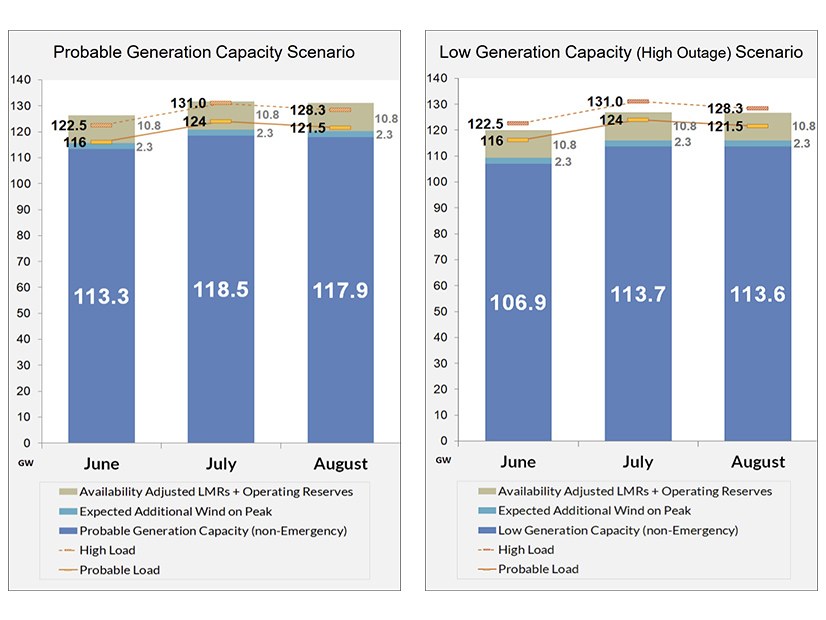MISO last week warned that even a normal amount of demand and generation outages will likely send it into emergency procedures this summer.
The RTO also didn’t rule out summertime load shedding during combinations of high demand and high generation outages.
At a summer readiness workshop Thursday, MISO said it projects “insufficient firm resources” to handle summer peak forecasts. The grid operator said it will probably rely on a combination of emergency resources and non-firm energy imports from neighbors to maintain system reliability in June, July and August.
MISO Resource Adequacy Coordination Engineer Eric Rodriguez said the RTO’s projections square with the 1.2-GW capacity shortfall across the Midwest that was exposed in last month’s Planning Resource Auction. (See MISO’s 2022/23 Capacity Auction Lays Bare Shortfalls in Midwest.)
The RTO said all summer months will require emergency resources to meet peak load conditions. Using a probable peak load forecast, MISO said it has 116 GW of firm resources to cover a 116-GW peak in June, an insufficient 119 GW to tackle a 124-GW peak in July and another 119 GW that will be no match for August’s 121-GW peak forecast.
Rodriguez said that while June is “pretty tight,” July and August contain significant reliability risks.
“Hopefully, with careful management of emergency resources, we’ll be able to navigate through the summer,” Rodriguez said.
MISO has about 12 GW worth of load-modifying resources (LMRs) and operational reserves that can only be accessed if it first declares an emergency.
The RTO said it could be in even worse shape if it encounters higher-than-normal temperatures coupled with a high level of generation outages. The grid operator said it’s possible it will find itself depleting all emergency resources and still coming up a few gigawatts short over all three months. In a worst-case scenario, MISO could have a little less than 114 GW in firm capacity and a daunting 131-GW demand during the July peak. In that case, it would be about 5 GW short after all firm and emergency resources are factored in.
MISO staff didn’t rule out the possibility of load shedding if it exhausts all its firm resources, emergency reserves and LMRs and emergency energy purchases from neighbors.
In a press release, Executive Director of Market Operations J.T. Smith said MISO Midwest is “at increased risk of temporary, controlled outages to preserve the integrity of the bulk electric system.”
“We exhaust every last megawatt before us before we get to that point,” Smith assured stakeholders at the workshop.
Smith also acknowledged that MISO is heading into summer without its usual 1,000 MW of firm capacity between Midwest and South, which also poses an additional, if small, risk when it and its neighbors experience heavy demand simultaneously. (See MISO Midwest-South Transfer Service on Outage until July.)
This summer, MISO expects above-normal to slightly above-normal temperatures in Midwest and South. The grid operator is also bracing for a lively Atlantic hurricane season and a “potentially active” storm pattern in the Midwest.
MISO Shift Manager Dan Munson said members should now expect maximum generation procedures during any season, even in spring and fall when temperatures spike.
“The thing to remember as we inch toward the summer is it could happen at anytime now,” Munson said. “The risk tolerances are changing.”
Since 2016, MISO has spent more than 40 days under a maximum generation alert, warning or event. Prior to 2016, it had not experienced any grid emergencies.
Over 2021, MISO spent 29 days in conservative operations mode for some or all of its regions; nine days were from hot weather, while 13 were from Hurricane Ida’s late August strike and recovery, limited to MISO South only.



